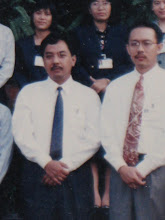
How Much mankind is divided by the use of different tongues! About 3,000 spoken Languages have been counted by experts.If all the dialects (local forms of a language) were added to the above figure, it would probably be much higher. But then even experts disagree in some cases about what is simply a dialect. Why? Because, even when people speak dialects of the same language, they may be unable to understand one another.
Most languages can be grouped together into about ten Language families (here, again, different numbers). All the languages in the same family are branches of one ancient parent language, and, in many cases, the patent language has died out.
Many persons know that French, Italian, Spanish, Portuguese and several other languages are all modern varieties of latin. Not so many are aware that even Latin is classified as being only a member of a languages of Europe and India. It is said to have developed from a lost ancestor called Indo-European.
Besides these, there are some tongues, like Japanese, that cannot be classified into any known family, and many other languages that have disappeared.
About half the world’s population speak a language classified as belonging to the Indo European Family. It is no accident that the world for “three”, for example, is similar in Russian (tri), German (drei), French (trios), Danish (tre), Dutch (drie), Irish (tri), Albanian (tre), and so on. All these languages are said to originate from the lost Indo-European language.
Only recently, since about the end of the eighteenth century, have linguists begun to analyze the history and relationship of living languages. Before that, They tended to compare merely the written form of words in different languages. But there is much more to the family relationship than that. Even When two languages have very few similar words. They may put sentences together in a way that shows a relationship between the two.
Take the example of Lao (the languages of Laotians, who are the people Laos) and Chinese. It would be difficult to find many words similar in these two languages, yet they have three other important features in common.
First, one word in both languages may have several different meanings according to the tone of voice used when saying it. For Example, the Lao saying it. For Example The Lao word “mu”, spoken with a low tone of voice,means “friend”. While with a rising tone it mean”pig”.
Second most words have only one syllable or are made up of several one –syllable words linked together.
Third, when speaking of a number of object one must use a word called a “Classifier” every time to denote the class of object to which they belong. Thus a Laotian cannot just say “three girls” but must say. “ Girl three persons ( of people).” Showing that girls belong to the class of “people”. These three features suggest that Chinese and Lao are relatives within the same language family.
On The other hand, we can not classify different languages by the characters in which the languages are written. English and Vietnamese both use the Roman alpabhet, which the Vianamese formally adopted in the seventeenth century, but the languages are very different Japanese and Chinese use similar writing. Which causes some person to associate them together. Yet each of them comes from a different languages family. English and Russian, however, which are regarded as distant relatives within the same family use different alpabhet
GEOGLOBE
Wednesday, February 18, 2009
THE LANGUAGES OF THE WORD
Subscribe to:
Comments (Atom)







